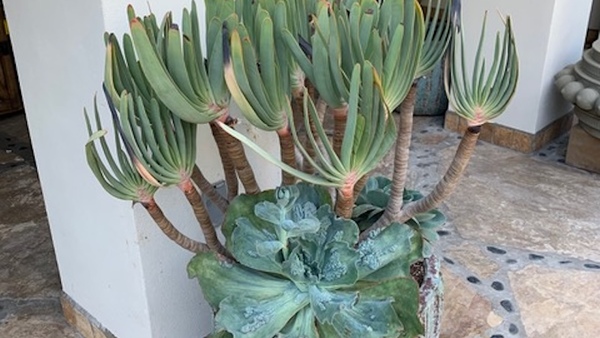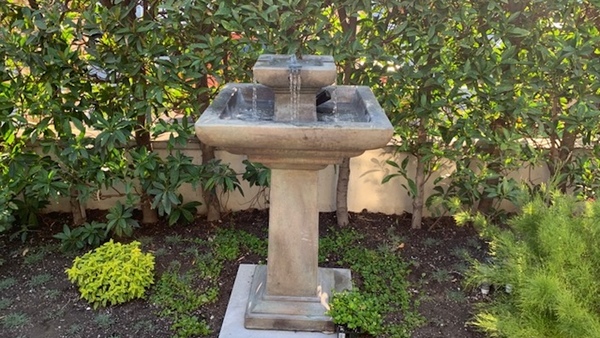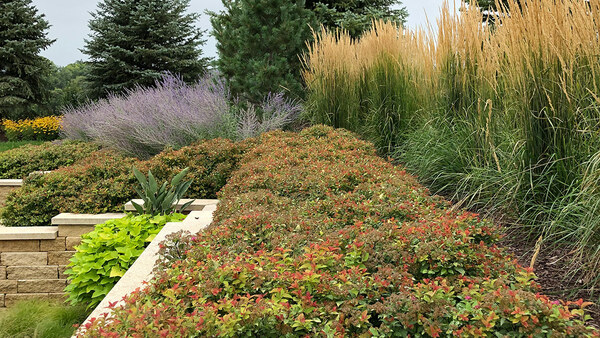
I have always thought that the best gardens are those that make people happy and comfortable. Sure, great gardens look good, but they have to feel good too. The gardens that I admire most are relaxing, easy to move through, and not too hard to maintain. Paths and structures must be simple to navigate, while the plants selected must provide interest and serve a function without being bullies or prima donnas. As a landscape architect, I tackle these issues of comfort and utility every day. Here are seven practical tips that have helped me create enjoyable, livable gardens for myself and my clients.
1. Allow plenty of elbow room

Patios and decks are perfect spaces for outdoor entertaining. Plan for enough room to accommodate dining and mingling. Consider how many guests you’re likely to host regularly, and plan on at least 4 square feet of space per person. Outdoor dining means outdoor furniture, so leave a 3-foot-wide perimeter of open space around any furniture grouping to allow for comfortable circulation.
2. Provide firm and safe footing

Be certain that any paving provides stability. Avoid slick surfaces or loosely set pavers that wobble. Paving materials such as polished granite or smooth outdoor tile may not offer enough traction in rainy and wintry climates. Gravel walkways are fine, but be sure to use unsifted gravel. Unsifted gravel contains aggregates of various sizes, which compact firmly and provide a solid footing. Sifted gravel is made up of aggregates of a similar size, which do not compact well and remain loose underfoot. Whatever material you use, make sure your paved surfaces are slightly sloped (1 to 2 percent) to keep water from pooling on them.
3. Watch your steps

Outdoor stairs should ascend gently; otherwise, they are liable to seem daunting. Steps that have a rise of 6 inches or less are the most comfortable. The run (or depth) of each step plus twice the rise (or height) should equal 26 inches. So steps with a 6-inch rise would require a run of 14 inches. If your garden stairway includes more than 10 steps, consider landings after every fourth or fifth step to ease progress. Landings should be at least as deep as the stairs are wide. A generous landing is an absolute necessity wherever a stairway changes direction.
4. Plan for growth
Give your plants room to grow. If you must have a dense, full landscape right away, realize you’ll need to relocate or remove some plants as they mature. You can also install quick-growing, short-lived filler plants to temporarily bulk up your beds.
 |
 |
5. Create a comfort zone
Conifers and broad-leaved evergreens can offer your garden protection from harsh winds. Large-scale perennials or ornamental grasses can make an instant privacy screen. A well-placed tree or tall shrub border can provide a shady oasis in the heat of a summer’s afternoon. Don’t think you have enough room for a tree? Think again. With so many compact ornamental trees available, there’s one to fit any property.
6. Give a wide berth

Make sure your pathways are wide enough for comfortable passage. Nobody enjoys squeezing through narrow spaces, indoors or out. Main thoroughfares should be no less than 5 feet wide, enough for at least two people to walk side by side. For secondary paths where people walk single file, the width should be at least 3 feet. Keep in mind that the taller the plantings or structures that flank your walkway, the wider the path needs to be. Tall boundaries make any space feel more restricted.
7. Keep your distance

Place any plants more than 30 to 36 inches tall at least 2 to 3 feet back from the edges of walkways and patios; otherwise, these spaces may feel unduly cramped and crowded. While you’re at it, keep thorny plants like roses (Rosa spp. and cvs., Zones 2–11) or pungent plants like crown imperials (Fritillaria imperialis and cvs., Zones 5–9) away from high-traffic areas.
Andrew Schulman designs beautiful and functional garden spaces in Seattle.
Fine Gardening Recommended Products

Corona® Multi-Purpose Metal Mini Garden Shovel
Fine Gardening receives a commission for items purchased through links on this site, including Amazon Associates and other affiliate advertising programs.

The Crevice Garden: How to make the perfect home for plants from rocky places
Fine Gardening receives a commission for items purchased through links on this site, including Amazon Associates and other affiliate advertising programs.

Gardener's Log Book from NYBG
Fine Gardening receives a commission for items purchased through links on this site, including Amazon Associates and other affiliate advertising programs.

















Comments
Log in or create an account to post a comment.
Sign up Log in